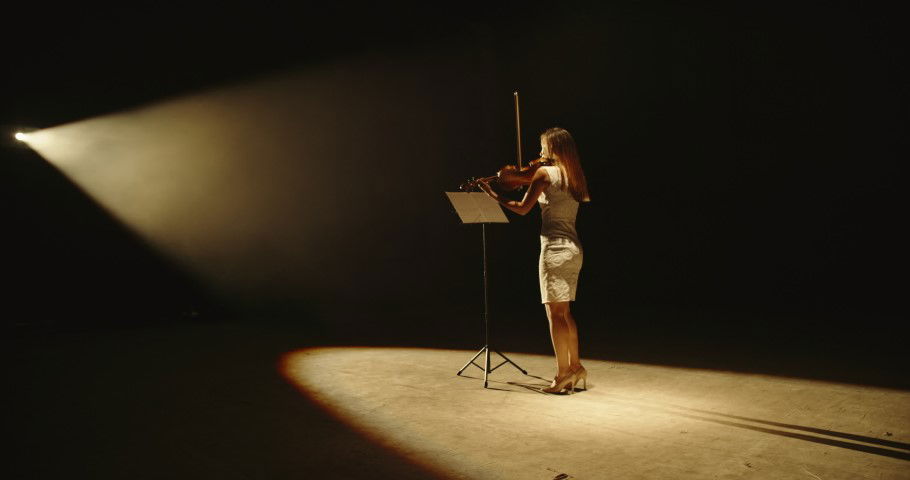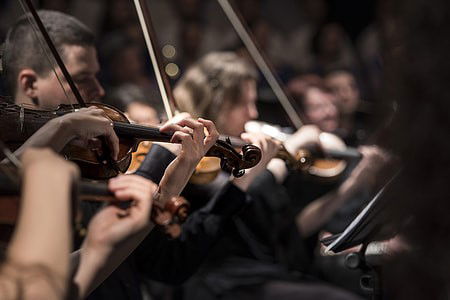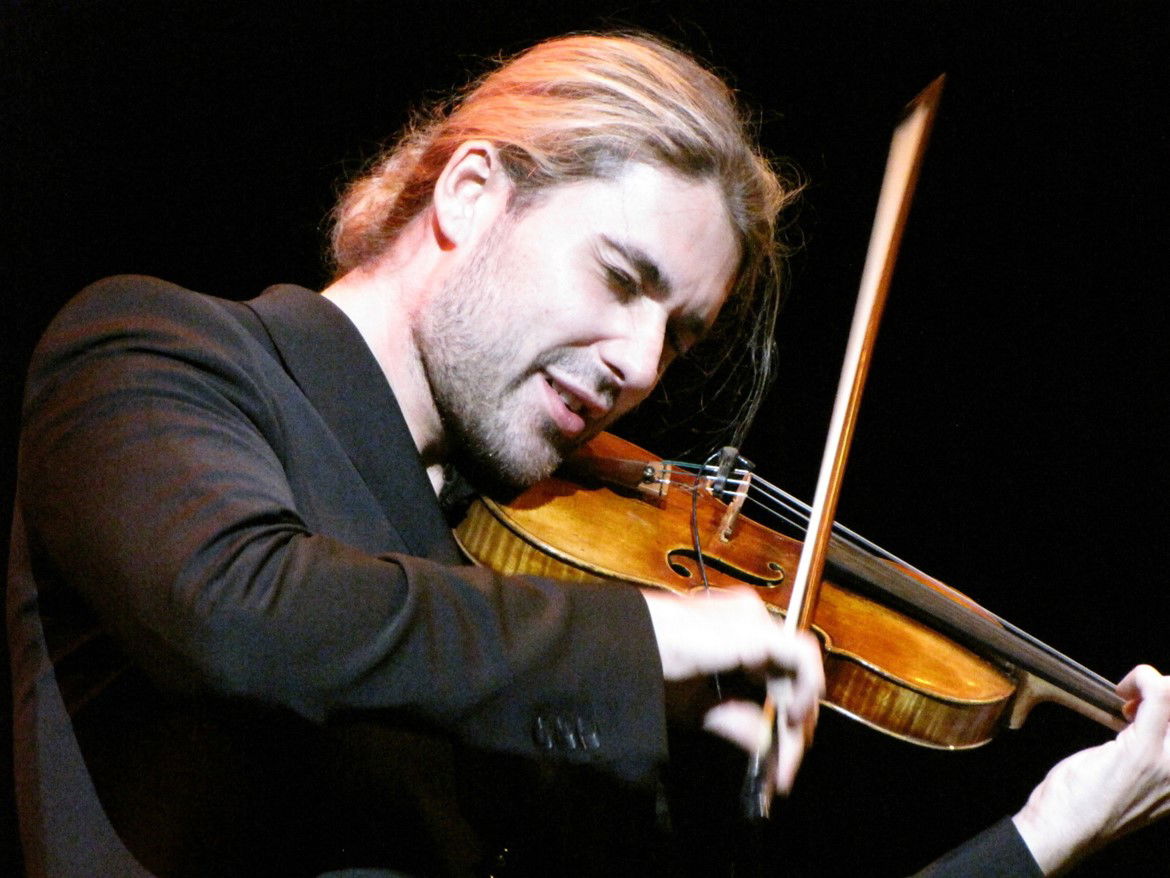How to Improve a String Player’s Tone and Performance

String orchestra music is a beautiful combination of harmonious strings, weaving together melodies that can enchant and captivate. Yet, the mastery of string instruments, such as the violin, viola, cello, and double bass, involves not just technical proficiency but also an inherent understanding of tone production and overall performance. Here, we'll explore techniques and strategies that can help string orchestra players enhance their tone and elevate their overall playing.
Understanding Tone Production:
Tone production is the essence of a string player's expression. It's not merely about playing the right notes but about delivering them with depth, warmth, and clarity. Here are key areas to focus on for improved tone:
1. Bow Control:
- Bow Pressure: Players can experiment with bow pressure. Too much pressure can create a harsh tone, while too little can result in a weak sound. Finding the right balance is crucial.
It’s also important to know how much of the bow hair should be touching the string. For quiet passages, there should be fewer hairs touching the string. This is accomplished by turning the bow slightly so that only the edge of the hair touches the string. For louder passages, the full amount of hair should touch the strings to give a full, rich sound.
Another thing to remember is that when playing high notes, even in louder passages, fewer hairs should touch the string to prevent a harsh, shrill sound.
Remember, too, that when attacking the strings from the frog of the bow, use the edge of the bow for the attack. Otherwise, the sound is harsh and squeaky. If a full, loud sound is needed from the beginning of the note, attack the string from a couple of inches up the bow. Some string players, when they need to play loudly all the time (think “bluegrass music”) will hold the bow that two inches up the bow so that they never use the frog of the bow. - Bow Speed: Varying bow speed influences the dynamics and tone quality. Faster bow speed often produces a louder, more vibrant sound, while slower bow speed can emphasize subtlety and softness. Bow speed also depends on the complexity of the passage. It may even require not using the full length of the bow to achieve the desired sound. Also, when playing in a string ensemble, whether quartet or orchestra, the bow speed may be affected by the bowing directions of the concert master.
- Bow Angle: The bow should always be drawn at a right angle to the instrument. A good reference point is the fingerboard. The elbow will tend to move away from the body, which is not the most natural movement, so that motion must be relegated to the use of what is called “muscle memory”. Muscles really don’t have memory, but the mind remembers each subtle nuance of how a bow is drawn or a finger is placed for each note and its accompanying pressure, dynamic, phrasing and other accoutrements. That way, the player can keep the bow the correct distance from the bridge.
2. Left Hand Technique:
- Finger Placement: Precise finger placement on the fingerboard is crucial for intonation. Inaccurate finger positioning not only produces a note that is sharp or flat, but affects tone quality and can result in a lack of resonance. A lot of the process of learning correct finger placement also has to do with “muscle memory”. Many string players, amateur as well as professional, use the vibrato to correct for a slightly missed finger placement.
- Finger Pressure: Players should maintain consistent and appropriate finger pressure on the strings. Too much pressure can cause the note to sound sharp, and too little can result in a weak tone. There needs to be just enough pressure to make the note sound right. Any more than that not only causes the note to be sharp but also tends to tire the fingers more quickly.
- Finger Technique: Not only is the finger placement and pressure important, but how they are used. If the finger is kept still, the tone will have a pure sound, which is appropriate in some situations. However, often the tone needs a bit more “body” and a slight vibrato will add that “body” to the tone by changing its pitch ever so slightly. The human voice, when well used, does that naturally. The sound of bowed stringed instruments is said to be the closest sound to the human voice; the addition of vibrato adds to that resemblance.

3. Resonance and Projection:
- Resonance: Players should listen to the resonance produced by their instruments. It is very important to allow the instrument to resonate fully to create a rich, full-bodied sound. To get the best overall resonance while using the bow, it should be about half an inch, or less, from the bridge. The closer to the fingerboard the bow is used, the thinner the sound becomes. That is great for soft, wispy-sounding passages, but does nothing for bold places in the music. However, the opposite is true when playing pizzicato. The best resonance for that is achieved by playing over the middle of the fingerboard.
- Projection: Understanding how to project sound to the audience without compromising tone quality is essential. This can also involve angle adjustments and positioning of the instrument. For violins and violas, it is important to remember to keep the instrument basically parallel to the floor. The body may be rotated a few degrees away from the face, but the axis between the neck and body of the instrument should be virtually parallel to the floor.
To produce both good resonance and projection, it’s important to be sure that the body of the instrument is allowed to vibrate without restriction. Some string players will add a bit of padding to the chin rest if it’s uncomfortable; if the concert is outside, the musician may want to wear a scarf; a microphone of some sort may be attached to the instrument; there may be a strange attachment that the player added to the instrument to add some special effect to the sound. All of these are acceptable if they are done without touching the body of the instrument – top, bottom or sides. If any of these things interfere with the vibration of the instrument, the resonance and projection will be compromised.

Practice Strategies for Improvement:
1. Scales and Etudes:
- Scales: Players should practice scales regularly, perhaps as part of their warm-up exercises. They help in developing intonation, finger dexterity, and understanding the instrument's tonal range.
Scales can be diatonic, chromatic, pentatonic or other arrangements of notes, such as the variety of minor scales. They may also include skips, often of small intervals. Scales are often written in homogenous notes (all quarter or all half notes) or simple rhythms such as a quarter followed by four or six eighth notes.
The first few times a scale is played should be as written, and very slowly, so that the player’s mind has a chance to develop the muscle memory it needs. Afterward, a good way to practice is with dotted pairs (dotted quarter followed by an eight note). This improves the muscle memory and helps the mind apply the notes to different rhythms. After dotted pairs, the player could try triplets or other assorted rhythms.
After experimenting with different rhythms, then the exercise can be sped up gradually, ending with a speed that is almost beyond practicality. The final step is to play the scale as written at a tempo that is almost at the limit of the player. - Etudes: Working on etudes specific to the instrument aids in mastering various techniques and challenges. To start with, practice these with the same variations as the scales. After the fundamentals of the piece are learned, then add things like appropriate dynamics, rubato and other tempo alterations. Make it a true solo piece, even if it will never be played in concert.
2. Listening and Emulation:
- Listen to Masters: Regularly listening to accomplished string players can be inspiring and educational. Players should pay close attention to their tone and style. Find the written music to the piece that you are listening to so that you can follow along to see what places are the same as what you might be playing now. Pay attention to any alterations they may have made, or seem to have made. Some pieces, especially the older ones, have been transcribed from the originals by different people. Those originals may have had some unclear places, either because of sloppy writing or a smudge or other mishap. The transcriber would then have had to make a good guess as to what that note or phrase should be, based on other similar passages in the piece.
- Emulation: After that, the player can try to emulate the tone and techniques of renowned performers to understand different nuances. As with many musicians, the way a piece is played often reflects some inner emotion or conviction of the player. Those can often be difficult to emulate; you may have to discover your own source of passion for the piece to make it your own. If you have the music, dare to try to play along.

3. Ensemble Playing:
- Listening and Blending: Players should actively listen to their section and the entire orchestra while playing. Achieving a unified sound enhances the overall performance quality. It is the job of the conductor to determine the overall sound of a piece, and some conductors will take suggestions, if presented properly.
- Communication: There should be open communication within the section and the orchestra. Discussing playing technique, tone quality and other specific elements of a particular piece, and then collectively working towards improvement can be highly beneficial. Often, players can learn from each other.
4. Mark the Music:
- No one can remember everything, especially in a complicated piece of music. Marking the music is a good way to help the player remember what needs to be done where. The music already has basic dynamics written in, but if the conductor wants to achieve them in a special way, that will need to be noted. NOTE: Some schools prohibit students from marking music. Players should check with the teacher about what the proper procedure is in that situation. Things like sticky notes and removable tape may be able to be used in such situations.
Mental and Emotional Approach:
1. Mindfulness in Playing:
- Relaxation: Remember the importance of being relaxed while playing. Tension affects tone quality negatively. Only use the muscles that you absolutely need to use, no more, no less. If you feel yourself getting tense, try shoulder rolls and hand exercises to regain your more relaxed condition. The essential thing here is to develop such a relaxed playing method that you won’t tense up during a performance and find yourself needing to unwind. That doesn’t make for goo concert etiquette.
- Concentration: Concentrate on the sound you produce. Mindful playing enhances control and expression. Although it may sound like a drug-induced mentality, many musicians will see shapes or colors, feel textures and other non-musical things while playing. Concert pianists often will make minor contortions with their mouths, either as a method of remembering a piece that they committed to memory, or as a way of extracting the best sound to match their current emotions, or both. More than one string player, especially while playing a solo, will move and sway with the music or make similar mouth shapes for the same reason. Those things are very acceptable, but only if they don’t detract from the music itself.

2. Emotional Connection:
- Expression: It is very helpful to understand the emotional aspect of the music being played. Connecting emotionally to the music played often results in a more expressive and resonant performance.
- Let the feeling guide the technique: If the music is soft and mellow, a light touch on the bow, played closer to the fingerboard and just the slightest hint of vibrato may be called for. Meanwhile, if a truly bold, sassy piece is being played, using the whole length of the bow with as much pressure as one can dare, being played nearly on top of the bridge will be the way to play. But, these techniques will have to be learned and practiced so that the most expression can be obtained from the instrument.
Conclusion: Improving tone and overall performance in a string orchestra involves a blend of technical mastery, consistent practice, and emotional connection. Players are encouraged to embrace the journey of improvement, understanding that it's not solely about playing the right notes but about infusing those notes with life, emotion, and resonance. By focusing on these elements, players can embark on a journey towards refining their tone and elevating their overall playing, contributing to a more compelling and impactful orchestral performance.
Remember, the journey towards mastering one's tone and performance is a continuous and enriching pursuit, showcasing the essence and beauty of the string orchestra's musicality.
Salt Cellar Creations understands the beauty and power that a String Orchestra can convey and has a growing library of original works and arrangements. Find out more about what Salt Cellar Creations has to offer for String Orchestras HERE. Explore the available music HERE.
SCC can also compose an original piece for you or do a custom arrangement for you. There are two ways that this can be done; one is much more affordable than the other. And SCC is always looking for ideas of pieces to arrange or suggestions for original pieces.
We have sold music not only in the US but in Canada, the United Kingdom, France, Australia, New Zealand and Austria. Please visit the WEBSITE or CONTACT US to let us know what we can do for you!